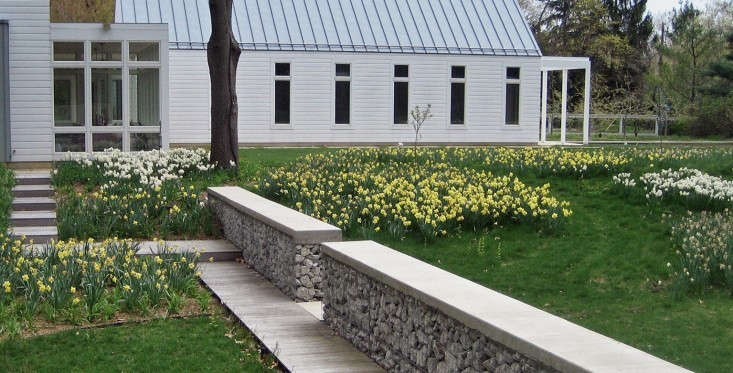You know how no one ever tells you the messy truth about pregnancy and childbirth? That’s also how I feel about gardening. No one ever explained to me how physically hard it can be or how weeds don’t go away completely just because you pulled them out by the roots. And definitely, no one ever took me aside to warn me that a significant number of my new plants might not come back next spring.
Someone should invent hardy flowers that, once planted, will, in addition to reliably blooming year after year, multiply on their own. Wait, what? Mother Nature has already invented this? I should plant bulbs that are good for naturalizing? What does that mean? And why didn’t you tell me this before?
N.B.: Featured photograph by Britt Willoughby Dyer for Gardenista, from Garden Design 101: Crocus, a Perfect Excuse for Color.

Why are some bulbs labeled “good for naturalizing?”
When you go to the nursery this fall for spring-blooming bulbs, you may find that some are labeled “good for naturalizing.” What does “naturalize” mean? Used as a verb, as in “I’m going to naturalize some bulbs this weekend,” it means to plant perennial bulbs in a way that makes your garden look informal and wild (as nature intends).
Used as an adjective, as in “Can you buy some naturalizing bulbs on your way home today?” it describes plants that, once established, will not only return every year but also bring along friends. Yep, without any effort of your own, they will come back in greater numbers. (These types of bulbs are sometimes also called “perennializing.”)
It can also be used as a noun, as in “I love naturalizers like daffodils in the garden, don’t you?” You should consider naturalizing bulbs if you don’t mind the look of flowers popping up helter-skelter, if you prefer unstructured, soft gardens over more formal ones, and if you like the idea of free flowers.

Aren’t all bulbs perennial, though?
Yes, by definition. But in practice, some bulbs, notably many tulips, are finicky and require optimal soil, water, and light conditions in order to thrive. (Tulips are native to Central Asia and Southern Europe, but many cultivated tulip varieties sold in the US will not naturalize.) Most American gardeners treat tulips more like annuals, as they tend to peter out after the first season.

How do you naturalize bulbs?
First, choose bulbs that are labeled “good for naturalizing.” (Go here for a good list of naturalizing bulbs.) Daffodils, crocuses, snowdrops, and some alliums and heirloom tulips—also known as “species” or wild tulips—are ideal candidates. Second, select a spot in your yard that has good drainage, enjoys at least four to six hours of sunlight, and doesn’t get foot traffic. Third, figure out the general size and shape (preferably curved and asymmetrical) of your natural plant colony; consider using a garden hose or rope to map out the area. Then, literally scatter your bulbs within the border of this space and dig holes where they land. Add compost as you plant the bulbs and water well.
In the spring, the flowering plants don’t need much attention. The key, in fact, is to leave them alone. After flowering, the foliage on naturalized plantings should be allowed to die back on its own (which can take as long as eight weeks). The foliage that’s left after flowering isn’t particularly attractive, but it’s the secret to a strong showing next spring; even though though the plant looks spent, the leaves are capturing sunlight to recharge the bulb.
Be sure to check out our field guide on Bulbs & Tubers. For a truly easy way to plant bulbs, consider a bulb planter; you can find one here: 10 Easy Pieces: Bulb Planters.
N.B.: This post is an update; it was first published October 2018.
For more of our beginner gardening series, see:
- Your First Garden: What You Need to Know Before You Plant Bulbs
- Your First Garden: What You Need to Know About Raking Leaves
- Your First Garden: What You Need to Know About Topsoil
- The Garden Decoder: What Happens When Edible Plants ‘Bolt’?
- The Garden Decoder: What Is a ‘Cool-Season Crop’?









Have a Question or Comment About This Post?
Join the conversation